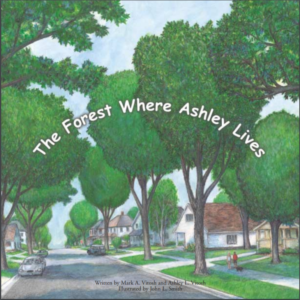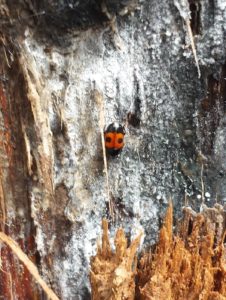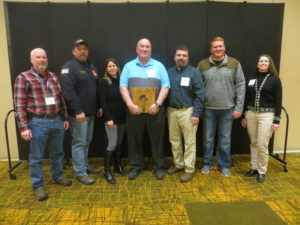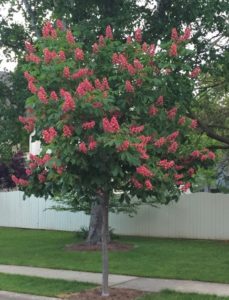By Olivia Witthun, DNR regional urban forestry coordinator, Plymouth, Olivia.Witthun@wisconsin.gov, 414-750-8744
 Are you going stir-crazy stuck inside your house or apartment? Take a visit to the forest outside your door! Step outside to enjoy the sights, sounds and smells of the trees and nature around you. It’s good for your mind, body and soul. Research shows exposure to nature reduces depression, anxiety and stress! Plus, we all know physical activity keeps your body healthy and boosts your mood.
Are you going stir-crazy stuck inside your house or apartment? Take a visit to the forest outside your door! Step outside to enjoy the sights, sounds and smells of the trees and nature around you. It’s good for your mind, body and soul. Research shows exposure to nature reduces depression, anxiety and stress! Plus, we all know physical activity keeps your body healthy and boosts your mood.
Eighty percent of American adults are afflicted by stress. Forty million are affected by anxiety disorders, and nearly sixteen million experience major depression each year. If you live in the city, those numbers are even higher. Urban dwellers have a 20% higher risk for developing anxiety disorders, 40% for mood disorders and double for schizophrenia. Stress has become a constant in people’s everyday lives, and the COVID-19 just adds even more. The cumulative effects of chronic stress can have serious health consequences over time, including: depression, anxiety, heart disease, high blood pressure, chronic pain and type 2 diabetes.

 Wisconsin Urban Wood is conducting a research project with support from the Forest Service to develop and demonstrate best practice standards for urban wood utilization in Wisconsin; including describing the:
Wisconsin Urban Wood is conducting a research project with support from the Forest Service to develop and demonstrate best practice standards for urban wood utilization in Wisconsin; including describing the:  Our thoughts are with the families who are grappling with school closures, while balancing work and facilitating their children’s school days. There have been many online sources for continued education for all levels of schooling and we encourage you to check them out in addition to those provided by your local schools.
Our thoughts are with the families who are grappling with school closures, while balancing work and facilitating their children’s school days. There have been many online sources for continued education for all levels of schooling and we encourage you to check them out in addition to those provided by your local schools.


